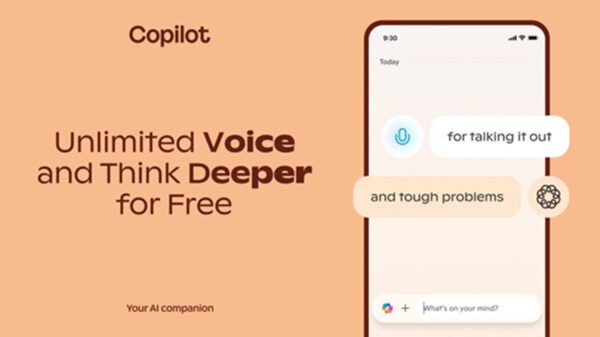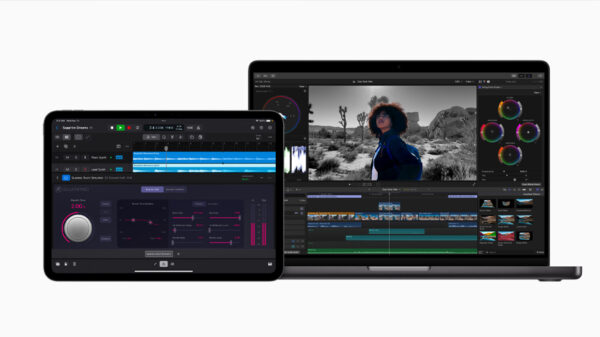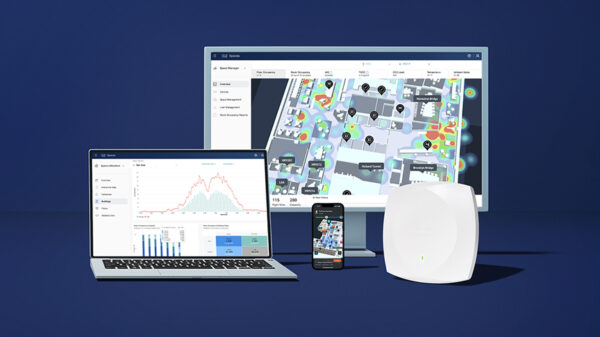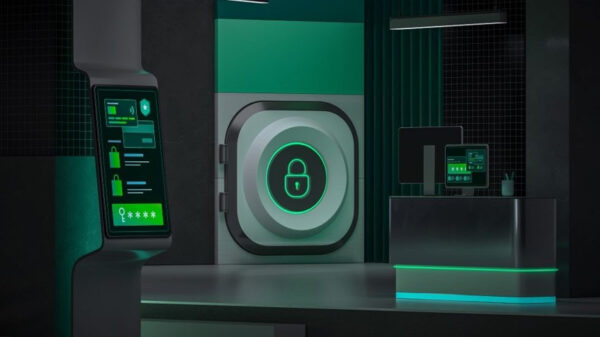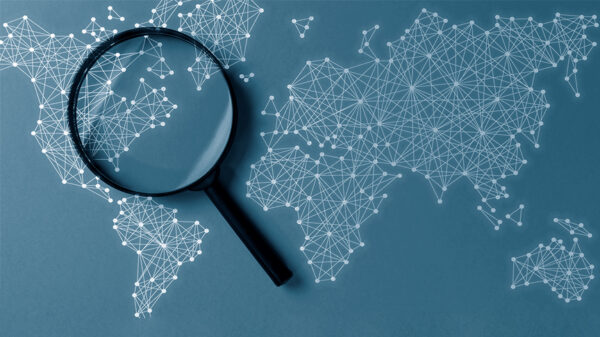As the pace of technology innovation accelerates, several emerging trends are poised to fundamentally alter how organizations tackle some of the most profound challenges and opportunities they face. Booz Allen Hamilton compiled an Annual List of Top Technology Trends for 2016 that identifies potentially major changes for business in two of the highest priority areas right now: cyber security and advanced analytics.
“As cyber risk and advanced analytics demand increasing attention from the c-suite, we are about to enter a fundamentally different period,” said Bill Stewart, executive vice president and leader of Booz Allen’s commercial cyber business. “The dynamics will change – both in terms of the issues themselves and the solutions available. Skilled leaders will factor these changing dynamics into their planning, investments and operations.”
To assemble its list of top trends, Booz Allen polled its own experts from a wide range of subject area and industry-specific backgrounds. In addition, the company drew upon its portfolio of client engagements and relationships at the c-suite level, to understand the emerging needs, concerns and views of corporate leaders.
“The developments in the technology market, coupled with greater application of advanced analytics methods and data science, will have a significant impact across the board. Those organizations that can build capability quickly as data plays an increasingly strategic role, will have an exponential competitive advantage,” states Xena Ugrinsky, a Booz Allen senior vice president and leader of the firm’s commercial analytics business. Within these broader mega-trends, the firm has also identified specific technology trends for 2016 in the energy, financial services, high-tech manufacturing, life sciences and retail industries.
Among the upcoming developments identified by Booz Allen, here are the “top nine” that will attract considerable interest from business organizations in 2016:
Vulnerabilities: Are We Secure Yet?
Your Dance Partner’s Connectivity = Vulnerability
As companies outsource logistics, business processes and other core services, they increase their cyber risk by connecting their systems to those of other companies. These connected systems must contend with unprecedented amounts of data. In 2016 alone, 5.5 million new devices are expected to become connected every day, according to Gartner. This connectivity risk holds true with complex supply chains that multiply cyber risk – both in terms of connected systems and component parts.
Increasingly, leaders will extend their “cyber territory” beyond the traditional boundaries that define their organization. They will demand a high degree of cyber security from partners up and down their supply chain, as well as any outsourcing vendors.
To navigate this complex environment, organizations will increasingly use data to select others for their “partner ecosystem.” Leaders will use analytics to proactively score potential partners in a “risk continuum,” while also employing algorithm based monitoring for both opportunities and exposure. Those firms that build out their skill sets in these areas will have an advantage in the market.
“Dark Web” – The Online Hacker Superstore
The cyber threat facing the corporate sector – historically driven by state-sponsored attacks, organized crime and “hacktivists,” – is poised to grow exponentially. The reason for this mounting threat: an increasingly open, accessible market for cyber-attack tools on the “dark web.” In the coming year, low-priced “hack kits,” easily purchased online, and other options will make it possible for just about anyone with basic computer skills to launch a cyber attack. The illegal, online market for “PII” (personally identifiable information) is becoming increasingly robust. For corporations, the explosive growth in threat actors and the ability to profit from stolen data will drive a basic re-assessment of how to approach cyber security.
Patchwork Prevention was Yesterday. Integrated Detection is the Key to Today and Tomorrow
Currently, the cyber strategy employed by many organizations is a patch work of point solutions. And the number of individual solutions is only growing. The problem: most of these point solutions don’t work together, because they weren’t designed together. String together a few high assurance solutions and the result is a large, insecure system.
The lack of solution integration creates vulnerability: the sheer number of individual solutions, a false sense of security. And if spending remains flat, it will result in too many tools that are too costly to maintain; gaps will persist. Looking ahead, organizations will seek help with “security integration” to mitigate this risk.
Combining Cyber, Analytics Creates Strong Defense
Organizations with strong cyber security initiatives possess a considerable amount of data capable of strengthening their cyber defenses. It’s the convergence of cyber and analytics that will enable the detection of adversaries “at the seams.” And yet, even now, that data often lies siloed within disparate programs that make up the cyber effort.
To unlock the power of their existing data, companies will invest in cyber “fusion centers” that combine different data sets, generated by all of the security programs, with advanced analytics – to deliver an unprecedented level of insight. The more companies understand about their “normal” environments, the greater their ability to develop security measures that detect abnormal, malicious behavior.
This approach extends to today’s commercial organizations what previously was the domain of government agencies. It brings military grade intelligence to the commercial market for the first time.
Fragmentation is also a growing problem in “big data” initiatives. As advanced analytics becomes a critical decision-making tool, leaders are capturing data from every corner of the organization. Some of this data is the product of specific applications (and sits within those applications). Other data lies within different systems, or in the cloud. The result: a scattered series of “data puddles” (rather than the much hyped data lake) that leaves the organization with a cyber security nightmare and cripples any advanced analytics.
To deal with this issue, leaders will streamline the technology powering information flow from data generation through consumption. Increased systems rationalization and a renewed focus on the organizational models required will also help tackle the data fragmentation problem.
Workforce: who’s the boss?
IoT Exposes Desperate Shortage of Cyber, Analytics Pros
Despite the proliferation of software tools and other technologies, much of what constitutes corporate cyber security still involves “eyes on glass” – individuals monitoring network activity in real-time. With the advent of the “Internet of Things,” security monitoring will have to cover billions of new ipv6 Internet addresses. The result: demand for individuals to monitor, analyze and react to each threat will expand to the breaking point.
However, the availability of this talent can be sparse. According to the (ISC)² Global Information Security Workforce Study, the shortfall in candidates needed to fill critical information security positions will rise to 1.5 million in five years.
In other industries, a spiraling increase in labor requirements triggered a wave of innovation: the same will hold true in cyber security. Increasingly, strategies will shift away from labor-intensive detection and response, to more robust analytics and embedded network security.
This explosion in data will compel organizations to update their approach to advanced analytics and necessitate the hiring of personnel capable of interpreting this data and deriving value for the organization.
Yesterday’s analytics methods are incapable of handling the volume, velocity and variability of data that will be generated by IoT sensors, let alone unlocking the value within the data. Organizations that evolve their traditional business intelligence and personnel capability to embrace emerging advanced analytics methods will quickly outpace the competition.
AI Changes the Workforce
It’s a hotly debated question: will thinking machines ever replace people in the workforce? Today, it’s starting to happen. Artificial intelligence (AI) is changing the mix of expertise required in the workplace. Adoption of AI and machine learning technologies increase automation – reducing the need for employees to handle the more mundane tasks, while accelerating the demand for employees to apply greater creativity and insight on more complex problems. Skill set requirements will continue to shift upward, and require talent with more complex reasoning and pattern recognition abilities.
The “I” in CIO Stands for More Than “Information”
There is a big change coming to the c-suite as the role of the chief information officer (CIO) is recast. The CIO is now capable of driving huge innovation across the enterprise and connecting stakeholders across the organization. Through crowdsourcing, hackathons, design thinking and visual storytelling, the CIO will have a powerful set of creative tools to help their organizations become more agile and innovative, while opening new revenue opportunities. Other recent additions to the c-suite – such as the chief data officer, the chief analytics officer and the chief information security officer – will also move in the same direction.
Returns: when will we see them?
“Big Data” Spending Draws Big Questions
As organizations build out a “big data” capability, they are finding the results can be slow in coming. In the rush to buy the right technology and hire a team of data scientists, they’re not building the foundational, organization-wide understanding of how to use advanced analytics for critical decision making.
As newly launched corporate big data efforts fail to gain traction, c-suite executives will begin to ask, “What are we getting for the money we’re spending?”
A wave of buyer’s remorse and skepticism will lead to the rise of a different approach to adopting advanced analytics. This new approach will focus on first establishing organizational competency in using analytics to tackle major challenges – before embarking on technology purchases or recruiting.
Opportunity: get personal
Hyper Personalization Is the New Customer Service
Advanced analytics will enable organizations to achieve an unprecedented, “360 degree view” understanding of their customers – on a highly individualized basis. This will mark a shift from targeting broad demographics to greater segmentation and the forging of a one-on-one relationship with customers. This intimacy will enable organizations to anticipate needs and create a great experience. For instance, for the retailer, in an era when shopping is increasingly done online, it can mean better insights into the performance of new products, and over time, improved brand loyalty.


















































